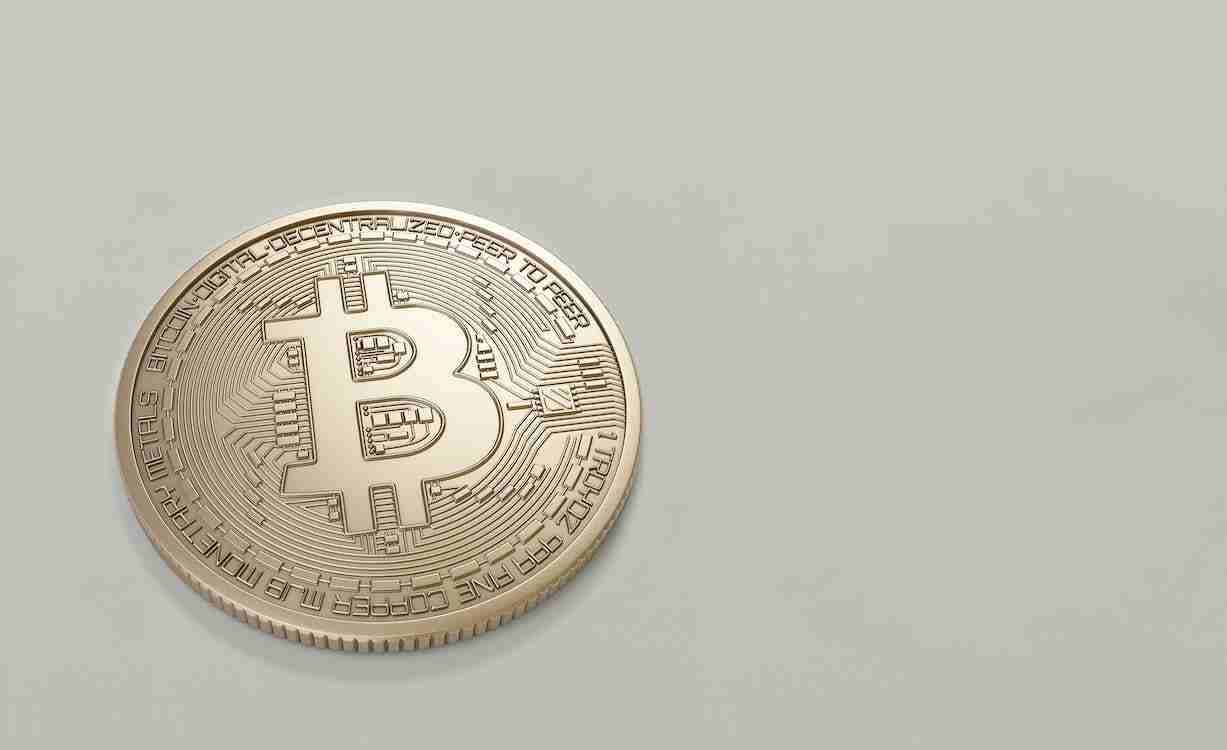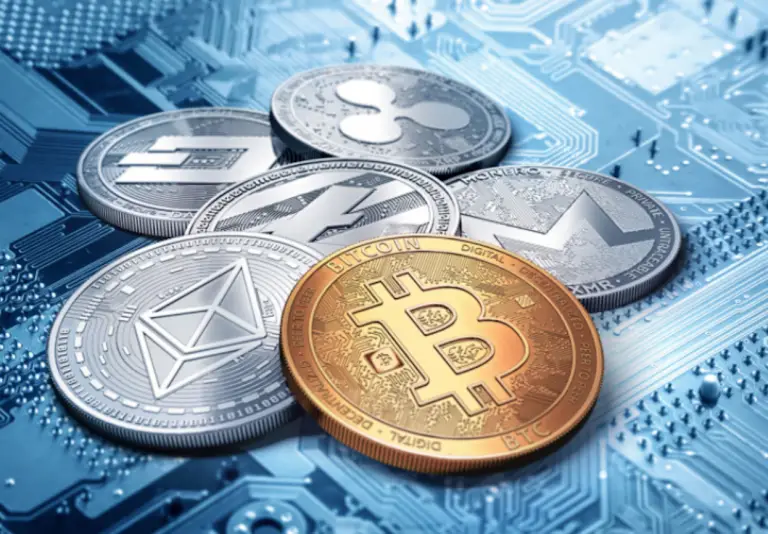Bitcoin is a decentralized digital currency that utilizes blockchain technology for secure and transparent record-keeping. It was created in 2009 by an unknown individual or group of individuals using the pseudonym Satoshi Nakamoto.
Bitcoin operates on a peer-to-peer network, meaning that it does not have a central authority or intermediary. Transactions are recorded on a public ledger called the blockchain, which is a chain of blocks containing transaction data.
Users can send and receive Bitcoins through the use of a digital wallet and a unique address. These transactions are verified by a network of computers, known as “miners,” who compete to solve complex mathematical problems in order to validate the transaction and add it to the blockchain.
The supply of Bitcoins is limited and controlled through a process called mining, in which new Bitcoins are released at a steady rate as an incentive for miners to validate transactions.
Bitcoin has gained popularity as a form of alternative currency and store of value, and it has been used for a variety of purposes, including online purchases, international money transfers, and investment. However, it is important to note that Bitcoin carries a high level of risk due to its volatility and lack of regulatory oversight.
A brief history of Bitcoin
The concept of Bitcoin was first introduced in a white paper published in 2008 by Satoshi Nakamoto, a pseudonym for the unknown person or group of people who created the cryptocurrency. The white paper outlined a decentralized digital currency that utilized blockchain technology to enable secure and transparent record-keeping.
In January 2009, the first block of the Bitcoin blockchain, known as the “genesis block,” was mined. This marked the official launch of the Bitcoin network and the beginning of cryptocurrency.
In the early years of its existence, Bitcoin was primarily used by a small group of tech-savvy individuals and was not widely known or understood by the general public. However, as the technology and infrastructure for using and storing Bitcoin developed, it began to gain more widespread adoption and recognition.
In 2013, the value of Bitcoin began to surge, reaching a peak of nearly $1,200 in December of that year. This rapid increase in value attracted significant media attention and helped to further increase the popularity and awareness of Bitcoin.
Since then, the value of Bitcoin has fluctuated dramatically, with both significant highs and lows. Despite this volatility, Bitcoin has remained a popular and influential cryptocurrency, with a growing number of merchants accepting it as a form of payment and increasing interest from investors.
 How Bitcoin Works
How Bitcoin Works
Bitcoin is a decentralized digital currency that utilizes blockchain technology to enable secure and transparent record-keeping. Transactions are recorded on a public ledger called the blockchain, which is a chain of blocks containing transaction data.
Here’s a more detailed breakdown of how Bitcoin works.
- Decentralized network.
Bitcoin operates on a decentralized network, meaning that it does not have a central authority or intermediary. Transactions are processed directly between users through the use of a digital wallet and a unique address.
- Blockchain technology.
The blockchain is a distributed database that maintains a continuously growing list of records called blocks. Each block contains a timestamp and a link to the previous block, forming a chain of blocks that cannot be altered. This structure allows for secure and transparent record-keeping, as any attempts to modify or tamper with the data would be immediately detectable and rejected by the network.
- Mining and validating transactions.
Transactions are validated and added to the blockchain through a process called mining. Miners use powerful computers to solve complex mathematical problems, and the first one to solve the problem gets to validate the transaction and add it to the blockchain. In return, they receive a reward in the form of a small number of Bitcoins.
- Cryptography and security.
Bitcoin uses cryptography to ensure the security and integrity of the network. Each user has a unique digital wallet that contains a pair of public and private keys. The public key is used to create a unique address, while the private key is used to sign and authorize transactions. This helps to prevent fraud and ensure that only the owner of the wallet can make transactions.
The decentralized nature of the Bitcoin network and the use of blockchain technology make it a secure and transparent system for processing and recording transactions.
- Bitcoin Decentralized network
A decentralized network is a type of network in which there is no central authority or intermediary controlling the flow of information or transactions. In a decentralized network, nodes (computers or devices connected to the network) are able to communicate and transact directly with each other, rather than relying on a central server or authority.
Bitcoin operates on a decentralized network, meaning that it does not have a central authority or intermediary overseeing the network. Transactions are processed directly between users through the use of a digital wallet and a unique address, and the network is maintained by a distributed network of computers, known as “miners,” who validate transactions and add them to the blockchain.
The decentralized nature of the Bitcoin network has several advantages, including:
- Censorship resistance.
Because there is no central authority controlling the network, it is more resistant to censorship or interference.
- Decentralized decision-making.
Decentralized networks often use consensus-based decision-making processes, allowing all participants to have a say in the direction of the network.
- Increased security.
Without a central point of failure, decentralized networks are less vulnerable to attacks or breaches.
However, decentralized networks also have some challenges, such as the potential for slower decision-making processes and the need for a large number of participants to maintain network security.
Characteristics of Bitcoin
Bitcoin has several characteristics that distinguish it from traditional currencies and make it a unique and potentially useful form of money. These characteristics include:
- Limited supply.
The total supply of Bitcoins is capped at 21 million, with just over 18 million currently in circulation. The limited supply is intended to ensure that the value of Bitcoin is not diluted over time and to mimic the scarcity of precious metals like gold.
- Pseudonymous transactions.
Bitcoin transactions do not require users to provide personal identifying information, and addresses are typically represented as a string of letters and numbers rather than a name. This means that users can remain relatively anonymous when using Bitcoin, although it is still possible to trace transactions through the public ledger.
- Fast and cheap international payments.
Bitcoin can be used to make fast and cheap international payments, as it is not subject to the same restrictions and fees as traditional financial institutions.
Decentralization and censorship resistance: Because the Bitcoin network is decentralized, it is resistant to censorship or interference from third parties.
- Fraud prevention.
Bitcoin’s decentralized nature and use of cryptographic security measures make it difficult for fraud to occur.
- Privacy and anonymity
As mentioned earlier, Bitcoin transactions do not require users to provide personal identifying information, which can provide a level of privacy and anonymity for users.
It’s important to note that while these characteristics may make Bitcoin attractive for some users, it also carries a high level of risk due to its volatility and lack of regulatory oversight.
Bitcoin Mining and validating transactions
Mining is the process by which transactions on the Bitcoin network are validated and added to the blockchain. It is an essential part of the Bitcoin network and helps to ensure the security and integrity of the network.
Miners use powerful computers to solve complex mathematical problems, known as “proof-of-work,” in order to validate transactions and add them to the blockchain. This process requires a significant amount of computational power and energy, as the mathematical problems are designed to be difficult to solve but easy to verify.
When a miner solves a problem and successfully adds a block to the blockchain, they receive a reward in the form of a small number of Bitcoins. This reward is designed to incentivize miners to continue participating in the network and to compensate them for the resources they expend on mining.
In addition to validating transactions and adding them to the blockchain, miners also help to secure the network by ensuring that all transactions are valid and that the blockchain remains free from tampering. If a miner tries to add a fraudulent or invalid block to the blockchain, it will be rejected by the rest of the network.
The process of mining plays a vital role in the functioning and security of the Bitcoin network, and it is an integral part of the decentralized nature of the cryptocurrency.
 Advantages of Bitcoin
Advantages of Bitcoin
Bitcoin has several advantages that have contributed to its popularity and widespread adoption as a form of digital currency. These advantages include:
- Decentralization and censorship resistance.
Because the Bitcoin network is decentralized, it is resistant to censorship or interference from third parties. This means that users can make transactions without the need for a central authority or intermediary, and it is more difficult for governments or other entities to restrict or control the use of cryptocurrency.
- Fraud prevention.
Bitcoin’s decentralized nature and use of cryptographic security measures make it difficult for fraud to occur. Transactions are recorded on a public ledger and cannot be altered, which helps to prevent double spending and other types of fraudulent activity.
- Privacy and anonymity.
Bitcoin transactions do not require users to provide personal identifying information, which can provide a level of privacy and anonymity for users. While it is still possible to trace transactions through the public ledger, the pseudonymous nature of Bitcoin can provide some privacy for users.
- Fast and cheap international payments
Bitcoin can be used to make fast and cheap international payments, as it is not subject to the same restrictions and fees as traditional financial institutions.
- Limited supply
The limited supply of Bitcoins is intended to ensure that the value of the cryptocurrency is not diluted over time and to mimic the scarcity of precious metals like gold.
However, it is important to note that Bitcoin carries a high level of risk due to its volatility and lack of regulatory oversight. It is not backed by any physical asset or government, and its value is subject to significant fluctuations. As such, it should be used with caution and only as a speculative investment.
Disadvantages of Bitcoin
While Bitcoin has several advantages that have contributed to its popularity and widespread adoption as a form of digital currency, it also has some disadvantages that should be considered. These disadvantages include:
- Volatility and price fluctuations
The value of Bitcoin is highly volatile and subject to significant fluctuations. This can make it difficult to use as a reliable store of value or medium of exchange, as the value of a Bitcoin can change significantly in a short period of time.
- Limited acceptance and adoption
While Bitcoin has gained widespread recognition and acceptance, it is still not widely accepted as a form of payment by merchants and retailers. This can make it difficult to use in everyday transactions, and users may need to rely on alternative methods to convert Bitcoin into a more widely accepted currency.
- Complexity and technical knowledge are required.
Using and storing Bitcoin can be complex and requires a certain level of technical knowledge. Users need to be familiar with concepts such as digital wallets, private keys, and addresses in order to use cryptocurrency effectively.
- Lack of regulatory oversight
Because Bitcoin is not backed by a physical asset or government, it is not subject to the same level of regulatory oversight as traditional financial instruments. This can make it more difficult to protect against fraud or other types of financial wrongdoing.
Overall, while Bitcoin has the potential to be a useful and innovative form of digital currency, it is important to carefully consider the risks and limitations before using or investing in it.
where to buy bitcoin
There are several ways to purchase Bitcoin, including:
- Bitcoin exchanges
Bitcoin exchanges are online platforms that allow users to buy and sell Bitcoin using various forms of payment, such as bank transfers or credit cards. Some examples of well-known exchanges include Coinbase, Kraken, and Bitstamp.
- Bitcoin ATMs
Bitcoin ATMs are physical machines that allow users to purchase Bitcoin using cash or a debit card. These machines are typically located in high-traffic areas, such as shopping malls or airports, and can be found by searching online for a Bitcoin ATM near you.
- Peer-to-peer platforms
Peer-to-peer platforms, such as LocalBitcoins, Binance, allow users to buy and sell Bitcoin directly with one another. These platforms typically allow users to connect and negotiate a price for Bitcoin using various forms of payment, including cash, bank transfers, and online payment systems.
- Over-the-counter (OTC) trading
OTC trading refers to the buying and selling of Bitcoin through a broker or dealer, rather than through an exchange. OTC trades are typically larger in size and may offer greater liquidity, but they may also come with higher fees.
It is important to carefully research and compare the different options available before purchasing Bitcoin. It is also important to be aware of the risks associated with owning Bitcoin, such as its volatility and the potential for losses due to fraud or other financial wrongdoing.








